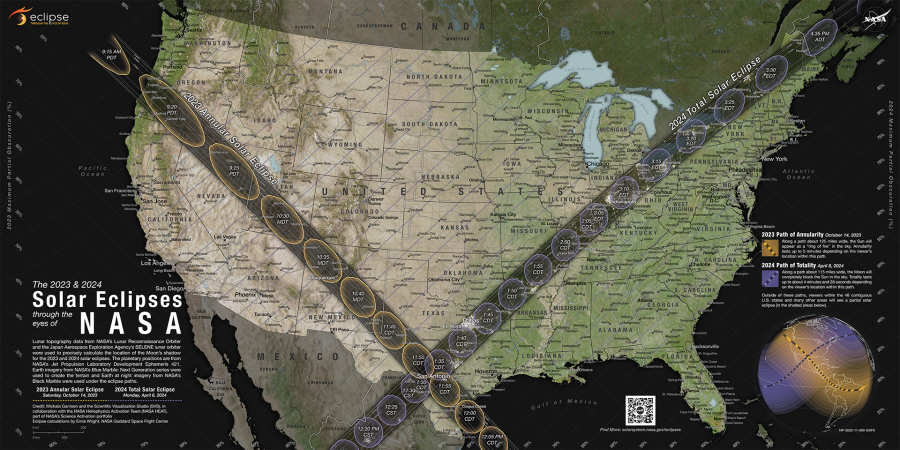PORTLAND, Ore. (KOIN) – Oregon, prepare to see the ring of fire. An annular eclipse will cross the United States from Oregon to Texas six months from Friday.
On Saturday, Oct. 14, Oregonians will need to grab their solar eclipse viewing glasses, their solar camera filters or their pinhole projectors if they hope to catch a glimpse of the sun’s outer ring shining brightly around a silhouetted moon.
“Bear in mind we won’t have a totality or an annular eclipse [again] for well over 100 years. This is the last major eclipse for Oregon,” said Jim Todd, director of space science education at OMSI. “We will have partial solar eclipses, but this will be the last of the two big eclipses: the total and the annular.”
Unlike the total solar eclipse that passed over Oregon in 2017, when parts of the state experienced total darkness in the middle of the day as the moon fully covered the sun, people will still see light if they’re in the path of this upcoming eclipse.
An annular solar eclipse occurs when the moon passes between the sun and Earth when the moon is at or near its farthest point from Earth. Because of this distance, the moon will appear smaller, allowing the light of the sun to shine around a dark circle.
In a total solar eclipse, the moon is closer to earth and appears bigger, therefore completely blocking the face of the sun and casting the path of the eclipse into darkness.
On the day of the solar eclipse, the Oregon coast will be first in its path across North America at 9:15 a.m. The eclipse will begin just north of Reedsport and will travel southeast, near Eugene, over Crater Lake and Klamath Falls before crossing into Nevada at 9:24 a.m.

That early in the morning, there’s a very good chance the Oregon coast and Willamette Valley could be covered by clouds or fog – and at Crater Lake, it might even be snowing. Todd believes the best place to view the eclipse will be in the Klamath Basin.
“It’s a beautiful area, high elevation desert, the fog tends to stop right around Roseburg. So, you can see I’m kind of advocating for Klamath Falls,” Todd said.
From Portland, the overlap of the moon and the sun will be about 86%, so the metropolitan area will be able to see a partial ring.
One thing Todd said to watch for (while using proper eye protection) during the eclipse are Baily’s Beads. After the moon is almost fully in the center of the sun, while one edge of the ring is still black, small, bright spots will begin to appear on the edge of the moon. The spots will increase in number until the whole edge connects to the rest of the ring of sunlight.
These bright spots, called Baily’s beads, are caused when sunlight shines between mountains and other uneven features on the moon’s surface.
Like in 2017, Todd expects people will flock to Oregon for a chance to see the solar eclipse. In 2017, eclipse-viewing crowds created some traffic and filled hotel and campground reservations.
Anyone hoping to stay in the eclipse’s path should start making plans now, Todd said. Especially considering the Oregon State University Beavers have a home game in Corvallis that day, which could result in more traffic in the Willamette Valley.
Todd strongly reminds people of the importance of wearing solar eclipse viewing glasses, which block out harmful ultraviolet and infrared rays. Looking at the sun with a naked eye, through a camera lens, telescope or sunglasses could cause serious eye injury.
All solar viewing glasses should be inspected carefully for scratches before they’re used. If they’re scratched, NASA says to throw them away.
The OMSI Science Store will have solar viewing glasses for sale soon, Todd said.
The next eclipse to cross the United States will be a total eclipse on April 8, 2024, but it will not cross over Oregon or Washington.
